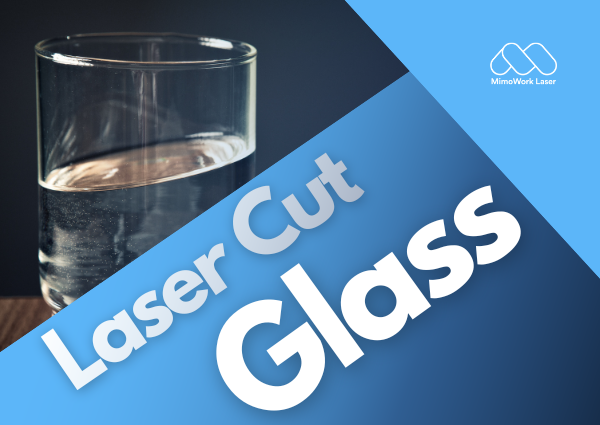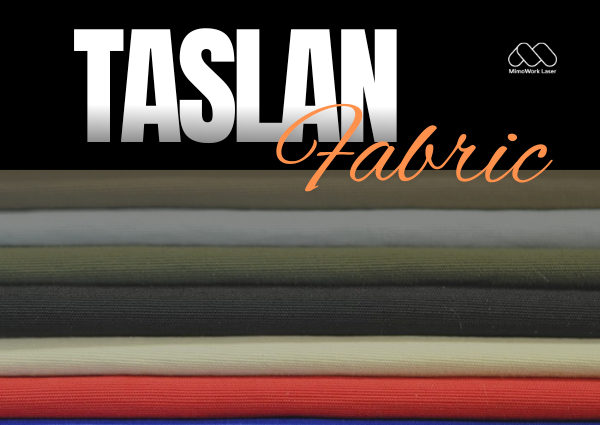Acrylic LGP (Light Guide Panel)
Acrylic LGP: Versatile, Clarity and Durability
While acrylic is often associated with cutting, many people wonder if it can also be laser etched.
The good news is that yes, it is indeed possible to laser etch acrylic!
Table of Content:
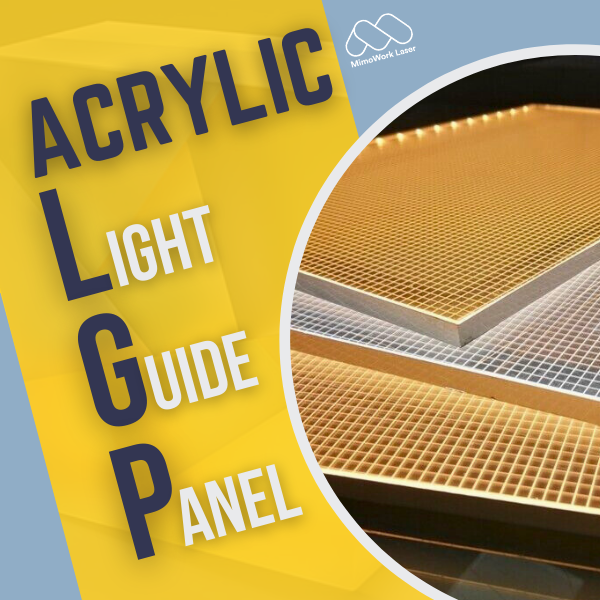
1. Can you Laser Etch Acrylic?
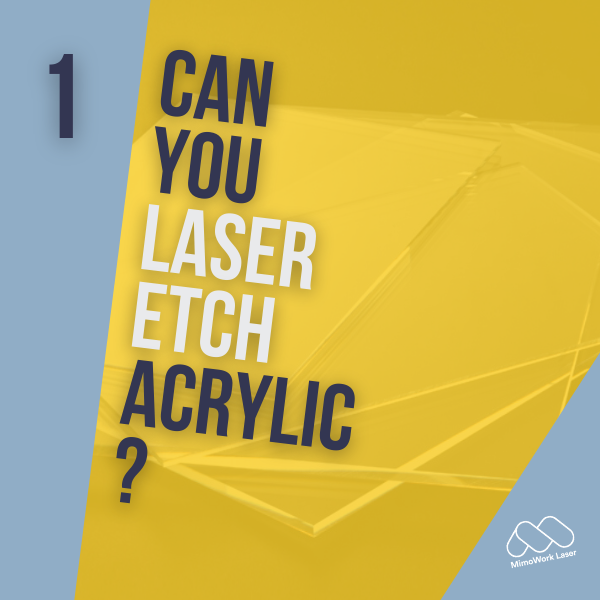
A CO2 laser can precisely vaporize and remove thin layers of acrylic to leave behind etched or engraved marks.
It operates in the infrared wavelength range of 10.6 μm, which allows well absorbtion without much reflection.
The etching process works by directing the focused CO2 laser beam onto the acrylic surface.
The intense heat from the beam causes the acrylic material in the target area to break down and vaporize.
This ablates away a small amount of plastic, leaving behind an etched design, text, or pattern.
A professional CO2 laser can easily produce high-resolution etching on acrylic sheets and rods.
2. What Acrylic is the best for Laser Etching?
Not all acrylic sheets are created equal when laser etched. The composition and thickness of the material affect etching quality and speed.
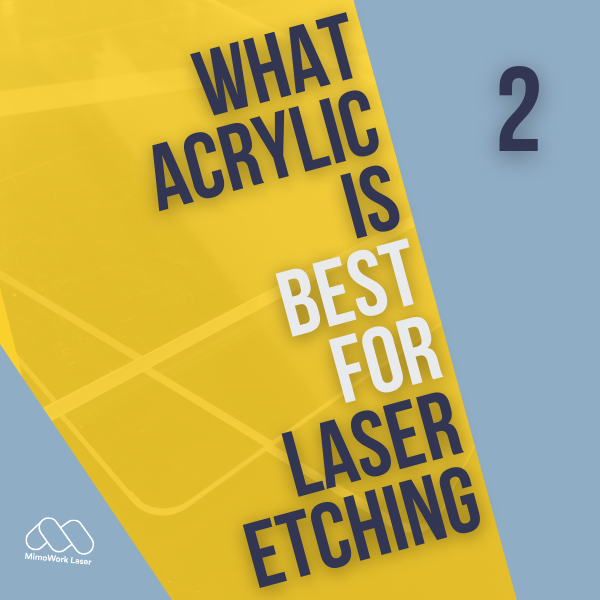
Here are some factors to consider when choosing the best acrylic for laser etching:
1. Cast Acrylic Sheets tend to etch cleaner and are more resistant to melting or burning compared to extruded acrylic.
2. Thinner Acrylic Sheets like 3-5mm is a good standard thickness range. However, a thickness under 2mm risks melting or burning.
3. Optically Clear, Colorless Acrylic produces the sharpest etched lines and text. Avoid tinted, colored, or mirrored acrylics which can cause uneven etching.
4. High-Grade Acrylic without Additives like UV protectants or antistatic coatings will result in cleaner edges than lesser grades.
5. Smooth, Glossy Acrylic Surfaces are preferred over textured or matte finishes which can cause rougher edges after etching.
Following these material guidelines will ensure your acrylic laser etching projects turn out detailed and professional-looking every time.
ALWAYS test sample pieces first to dial in the right laser settings.
3. Light Guide Panel Laser Etching/Dotting
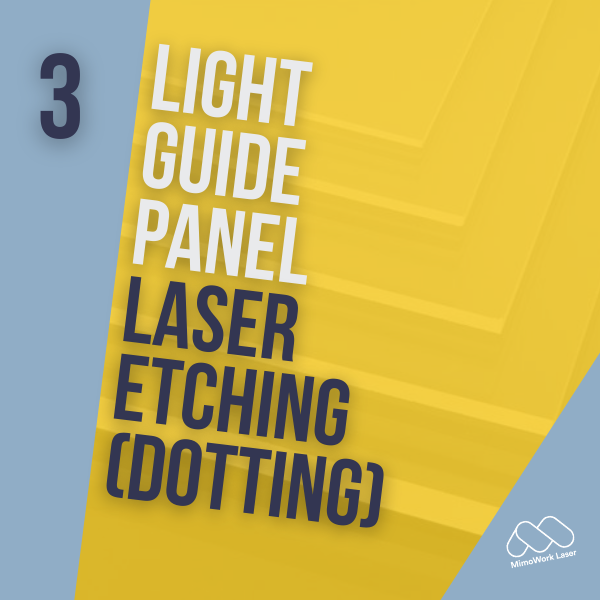
One common application for laser etching acrylic is the production of light guide panels, also called dot matrix panels.
These acrylic sheets have an array of tiny dots or points precisely etched into them to create patterns, graphics, or full-color images when backlit with LEDs.
Laser dotting acrylic light guides offers several advantages over traditional screen printing or pad printing techniques.
It provides sharper resolution down to 0.1mm dot sizes and can place dots in intricate patterns or gradients.
It also allows for quick design changes and on-demand short-run production.
To laser dot an acrylic light guide, the CO2 laser system is programmed to raster across the sheet in X-Y coordinates, firing ultra-short pulses at each target "pixel" location.
The focused laser energy drills micrometer-sized holes or dimples through a partial thickness of the acrylic.
By controlling the laser power, pulse duration and dot overlap, different dot depths can be achieved to generate varying levels of transmitted light intensity.
After processing, the panel is ready to backlight and illuminate the embedded pattern.
Dot matrix acrylic is finding growing uses in signage, architectural lighting, and even electronic device displays.
With its speed and precision, laser processing opens up new creative possibilities for light guide panel design and manufacturing.
Laser Etching is Commonly Used for Signage, Displays, and Other Applications
We are Happy to get you Started Right Away
4. Advantages of Laser Etching Acrylic
There are several advantages to using a laser to etch designs and text onto acrylic compared to other surface marking methods:
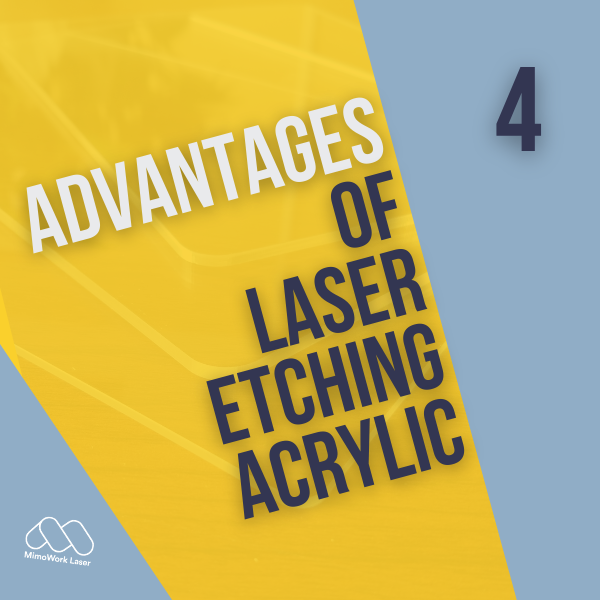
1. Precision and Resolution
CO2 lasers allow for etching extremely fine intricate details, lines, letters, and logos with resolutions down to 0.1 mm or smaller, not achievable through other processes.
2. Non-Contact Process
Since laser etching is a non-contact method, it eliminates the need for masking, chemical baths, or pressure that could damage delicate parts.
3. Durability
Laser etched acrylic marks withstand environmental exposures and are highly durable. The marks will not fade, scratch off, or require reapplication like printed or painted surfaces.
4. Design Flexibility
With laser etching, last-minute design changes can be made easily through digital file editing. This allows for quick design iterations and on-demand short production runs.
5. Material Compatibility
CO2 lasers can etch a wide variety of clear acrylic types and thicknesses. This opens up creative possibilities compared to other processes with material restrictions.
6. Speed
Modern laser systems can etch intricate patterns at speeds up to 1000 mm/s, making acrylic marking highly efficient for mass production and large volume applications.
For Laser Etching Acrylic (Cutting & Engraving)
Beyond light guides and signage, laser etching enables many innovative acrylic applications:
1. Electronic Device Displays
2. Architectural Features
3. Automotive/Transportation
4. Medical/Healthcare
5. Decorative Lighting
6. Industrial Equipment
Laser Processing Acrylic Requires Some Careful Handling
Including Setting Adjustments to Ensure High Quality, Burr-Free Results.
5. Best Practices for Laser Etching Acrylic
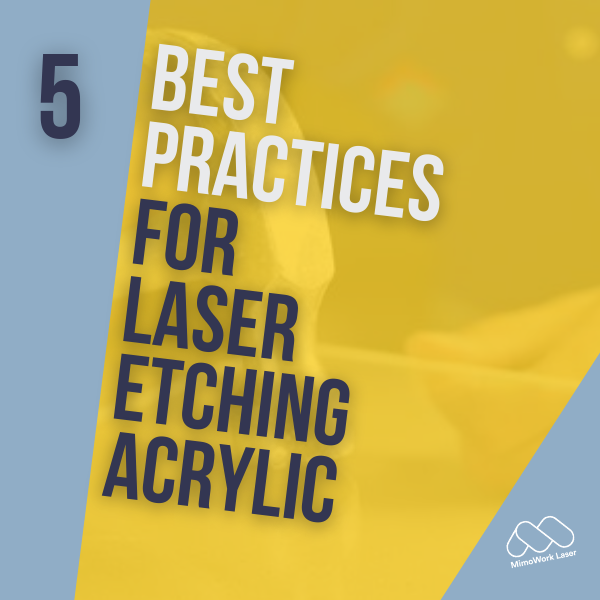
1. Material Preparation
Always start with clean, dust-free acrylic. Even small particles can cause beam scattering and leave debris in the etched areas.
2. Fume Extraction
Proper ventilation is essential when laser etching. Acrylic produces toxic fumes that require effective exhaust directly at the work zone.
3. Focusing the Beam
Take time to perfectly focus the laser beam on the acrylic surface. Even minor defocusing leads to inferior edge quality or incomplete removal of material.
4. Testing Sample Materials
Test etch a sample piece first using the planned settings to check results before processing large runs or expensive jobs. Make adjustments as needed.
5. Proper Clamping & Fixturing
The acrylic must be securely clamped or fixture mounted to prevent movement or slipping during processing. Tape is not sufficient.
6. Optimizing Power & Speed
Adjust the laser power, frequency, and speed settings to fully remove acrylic material without excessive melting, charring or cracking.
7. Post-Processing
Lightly sanding with high grit paper after etching removes microscopic debris or imperfections for a ultra-smooth finish.
Adhering to these laser etching best practices results in professional, burr-free acrylic marks every time.
Proper setup optimization is key for quality results.
6. FAQs on Laser Acrylic Etching
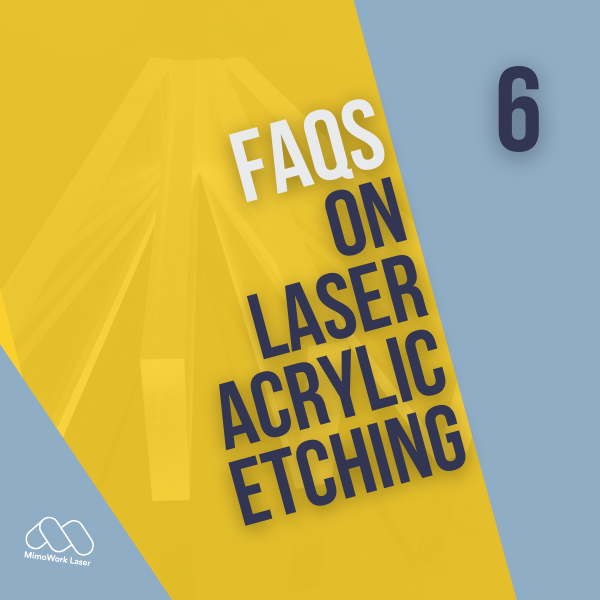
1. How long does laser etching take?
Etching time depends on the design complexity, material thickness, and laser power/speed settings. Simple text typically takes 1-3 minutes while complex graphics could take 15-30 minutes for a 12x12" sheet. Proper testing is required.
2. Can the laser etch colors into acrylic?
No, laser etching only removes acrylic material to reveal the underlying clear plastic below. To add color, acrylic must first be painted or dyed before laser processing. Etching will not change the color.
3. What kind of designs can be laser etched?
Virtually any vector or raster image file format is compatible for laser etching onto acrylic. This includes complex logos, illustrations, sequential numeric/alphanumeric patterns, QR codes, and full-color photographs or graphics.
4. Is the etching permanent?
Yes, properly laser etched acrylic marks provide a permanent engraving that will not fade, scratch off, or require reapplication. The etching withstands environmental exposures very well for long-lasting identification.
5. Can I do my own laser etching?
While laser etching requires specialized equipment, some desktop laser cutters and engravers are now affordable enough for hobbyists and small businesses to perform basic acrylic marking projects in-house. Always follow safety precautions.
6. How do I clean etched acrylic?
For routine cleaning, use a mild glass cleaner or soap and water. Do not use harsh chemicals which could damage the plastic over time. Avoid getting acrylic too hot when cleaning. A soft cloth helps remove fingerprints and smudges.
7. What is the maximum acrylic size for laser etching?
Most commercial CO2 laser systems can handle acrylic sheet sizes up to 4x8 feet, though smaller table sizes are also common. The exact work area depends on the individual laser model - always check the manufacturer specs for size limitations.





